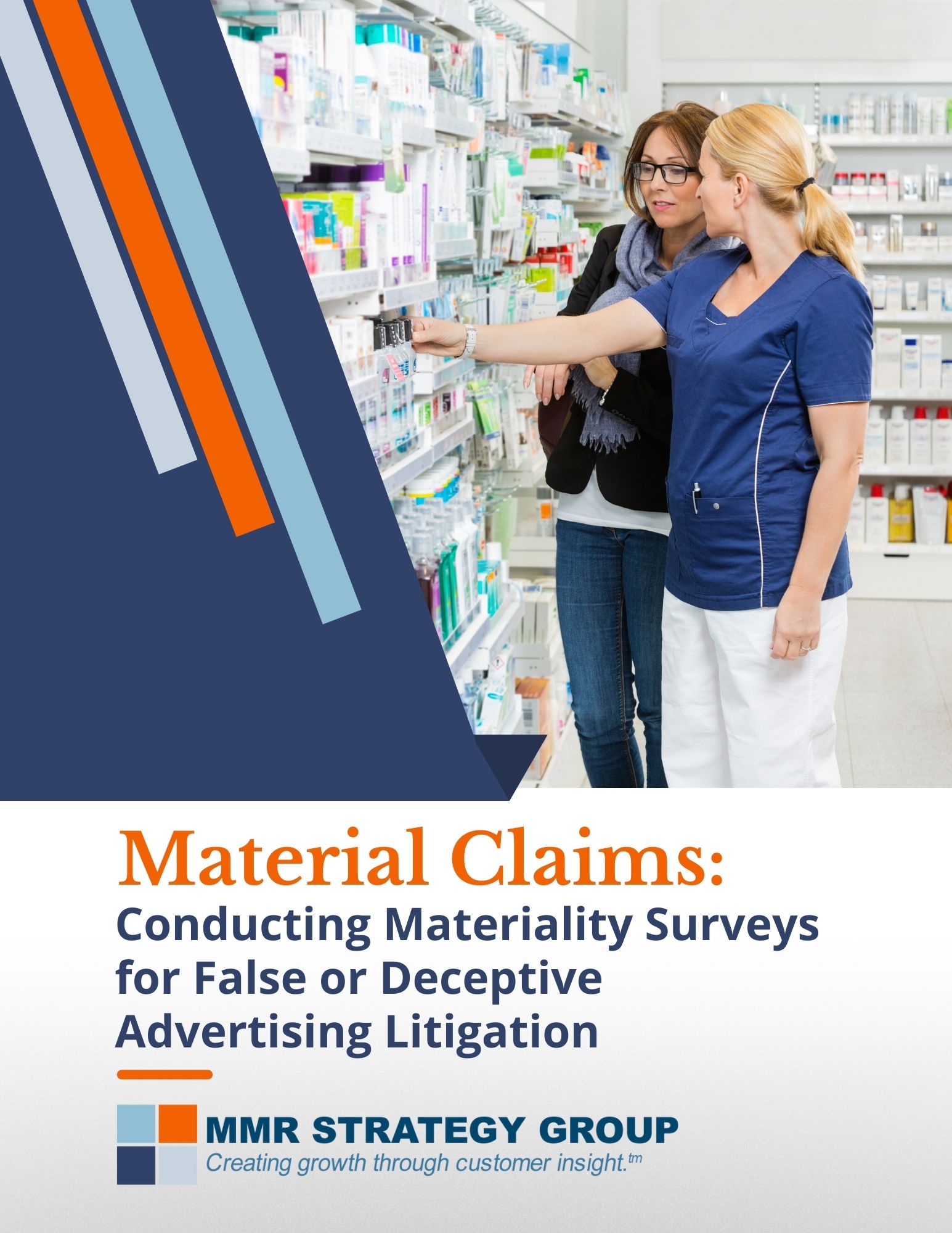Secondary Meaning
MMR Strategy Group conducts surveys to measure secondary meaning, or acquired distinctiveness, in intellectual property matters. A secondary meaning survey typically seeks to assess whether a “significant” or “substantial” part of the consumer class associates a trademark or trade dress with a single source.
We conduct secondary meaning surveys using questionnaires designed to measure whether the trademark or trade dress is typically associated with one source and whether that one source is the plaintiff or the defendant. The results of these surveys can be used to evaluate whether secondary meaning exists.
Our secondary meaning surveys are designed according to best practices in trademark and false advertising surveys.

What is Secondary Meaning in Intellectual Property Litigation?
A secondary meaning survey typically seeks to assess whether a “significant” or “substantial part” of the customer class associates a trademark or trade dress with a single source. Secondary meaning exists if respondents in a survey associate the trademark or trade dress with only one company. The measurements from these questions can be compared against standard sources or past precedents, to evaluate whether or not secondary meaning is present in sufficient quantity to be considered substantial or relevant.
MMR Strategy Group survey experts may measure secondary meaning through questions such as:
- Have you ever heard of [the trademark] with regard to [the context]?
- (If “yes” above:) Do you associate [the trademark] with [products] from one company, more than one company, no company, or you don't know?
- (If “one company” above:) What company do you associate with [the trademark]?
- Secondary meaning exists if respondents associate the trademark or trade dress with only one company.
Explore Our Library
Review Litigation Survey Resources
Featured Blog Article

To Opt In or to Opt Out: Negative Option Marketing Guidance Minted by Consumer Surveys
Featured White Paper

Materiality Claims: Conducting Materiality Surveys for False or Deceptive Advertising Litigation
Featured case study
